Cave Climates
Climate is the typical atmospheric condition of an area. Climates are commonly thought to cover large regions of our planet’s surface, but microclimates occur under special conditions above and below the ground.
Cave climate refers to the typical temperature, humidity, airflow, and other atmospheric conditions inside a cave. The climate of a cave depends on several factors. Its latitude and elevation control the general temperature. A cave’s geometry, size, and number, and size of entrances affect how much temperature varies in a cave, but they also affect airflow and humidity. Less common influences on cave climate are the types and volumes of gases in a cave.
Below we’ll focus on the four most common factors that control cave climate: temperature, humidity, airflow, and air quality.
Temperature
Caves are often described as having a constant temperature. The reason is that rock is slow to transmit heat. By the time the difference between summer and winter temperatures on the surface reach a cave, they balance each other so the average surface temperature becomes the ground temperature.
But caves do not have constant temperatures. Small to large changes occur. Generally, the farther you go into a cave, the smaller the changes. Single-entrance caves are the most stable, especially if the entrances are small. Caves with greater airflow have greater temperature variations. Multiple entrances result in more airflow, but differences in temperature also affect temperature and air movement.
Ice caves are an extreme example of cave temperatures. These caves are formed in rock but contain ice at least part of the year. Some contain year-round ice because of the caves’ shape, even in regions with temperate surface climates. In these cases, cold winter air naturally sinks into caves. Because cold air is denser than warm air, the shape of some caves doesn’t allow the cold air to be pushed out and replaced by warm air in the summer. This chills the cave walls and, if the air is cold enough and has a large enough volume, it allows water to freeze.
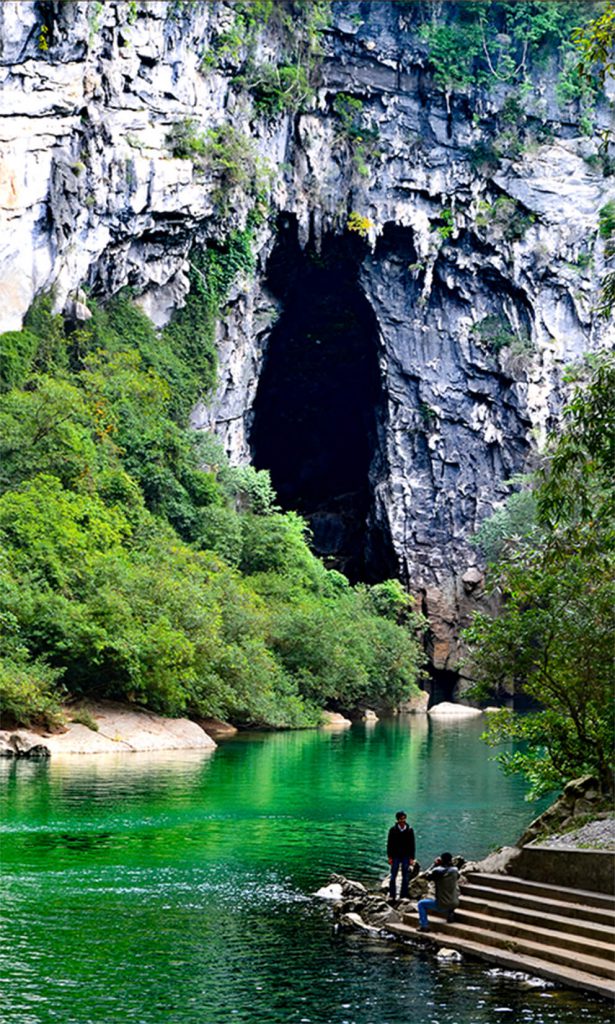
The entrance to this cave in China is tall enough to fit a 30-story building. Its large size allows temperature and humidity in the cave to vary more than in a cave with a small entrance. – NCKRI staff photo: George Veni 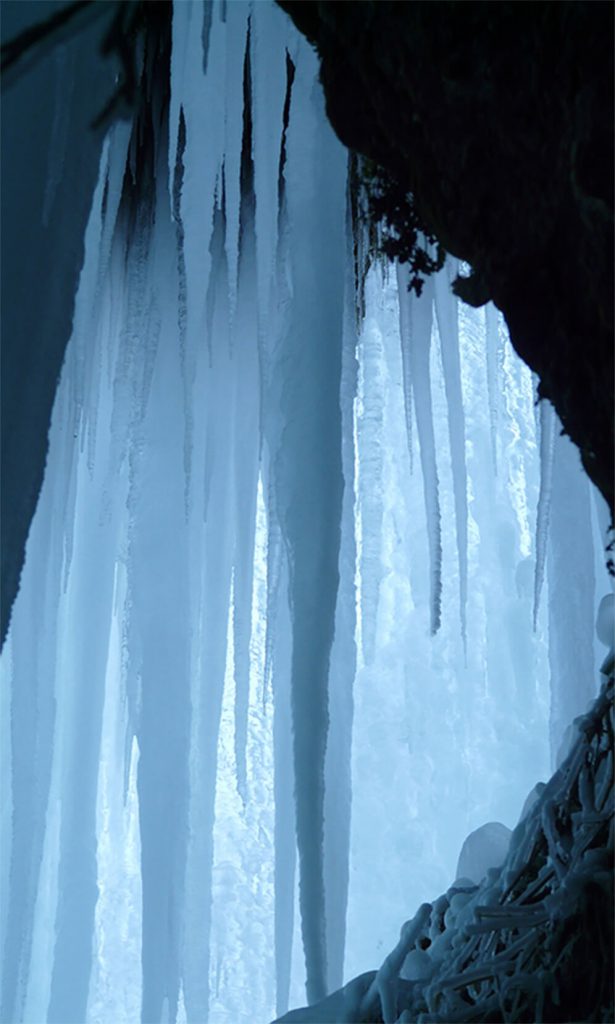
Ice can last year-round in caves that are traps for freezing winter air.
Humidity
Humidity is often considered constant and nearly 100% in caves, but as with temperature, those generalizations are not accurate. Water enters caves from the top, by water flowing in through entrances and down via cracks in the rock ceiling. Water also enters caves from the bottom in underground streams. The rate of water movement into a cave depends on the rate of rainfall. As warm or cold water flows into a cave according to the season, it will also affect the cave’s temperature and humidity.
Similar again to temperature, humidity is more stable farther into a cave and in caves with one entrance and/or small entrances. Humidity is also related to temperature because it is measured as relative humidity, where the volume of water in the air increases with temperature. A cold cave with 90% relative humidity will have less water in the cave atmosphere than a warm cave of the same size with the same relative humidity. As a result, when warm, humid, summer air enters a cave, the cooler cave air can’t hold that moisture and condenses it as droplets and films of water on the cave walls.
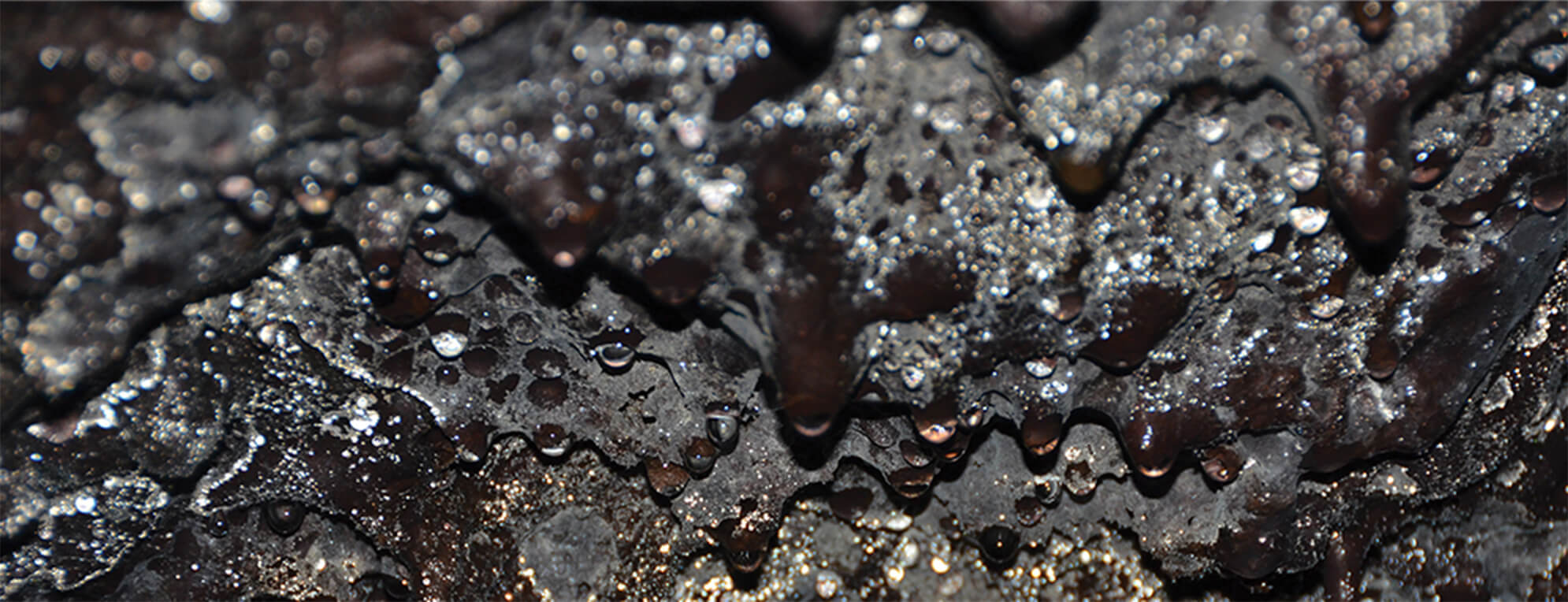
Airflow
Cave explorers say, “If it blows, it goes!” Air movement is often the sign of a large cave. It is caused by differences in air temperature and/or barometric pressure between the cave and the surface. Some of these changes occur daily and regularly, typically as the sun rises and warms the surface air in the morning, and as the sun sets and surface air cools in the evening. Pressure changes also occur as high and low air pressure systems move through a region.
Air pressure inside a cave always tries to equalize with the outside air pressure. If air pressure outside the cave is greater, air moves into the cave and vice versa. Also, winter air is colder and thus denser than cave air, moving down cave floors and pushing warmer air out of a cave along with the ceiling. Large caves have larger volumes of air, so as those pressure differences equalize, the air movement can be felt as a slight breeze up to a strong wind.
Some caves with high airflow are small, with the air current resulting from the chimney effect. This happens when caves have multiple entrances and especially at different elevations. Cold winter air may enter these caves through lower entrances and push warmer air up and out of higher entrances. In the summer the situation is reversed, causing air to travel from the higher to lower entrances.
Airflow and direction can sometimes be observed in caves, even when a breeze can’t be felt, by a process called condensation-corrosion. As moist air moves through caves, it collects or condenses on cave walls and speleothems. In many cases that moisture will corrode the surface that faces the upwind direction. As airflow pushes the moisture downwind along that surface, enough limestone or calcite may dissolve into the thin film of water to deposit calcite in that downwind direction, usually in the form of cave coral speleothems.
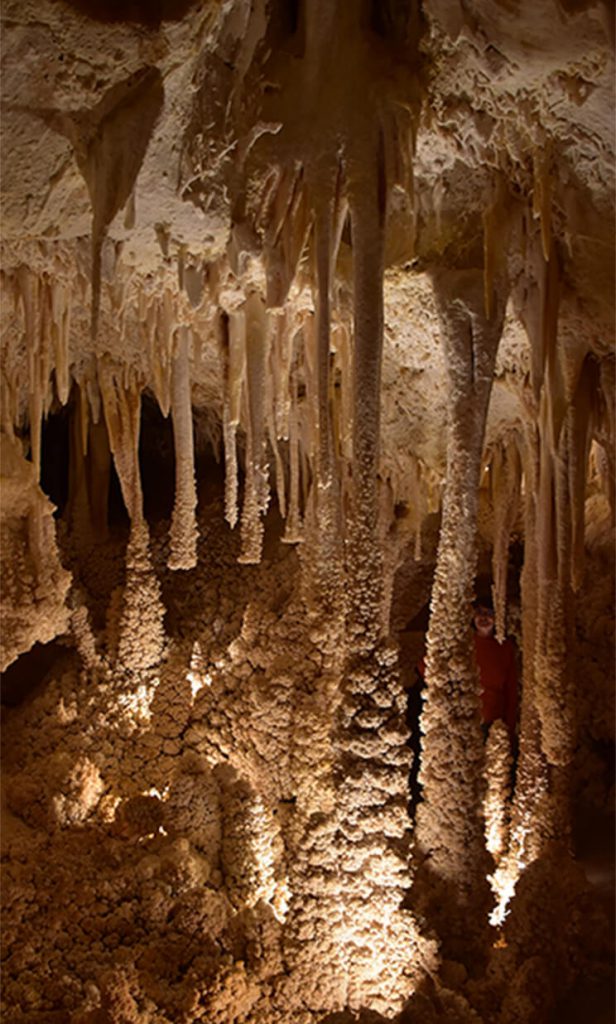
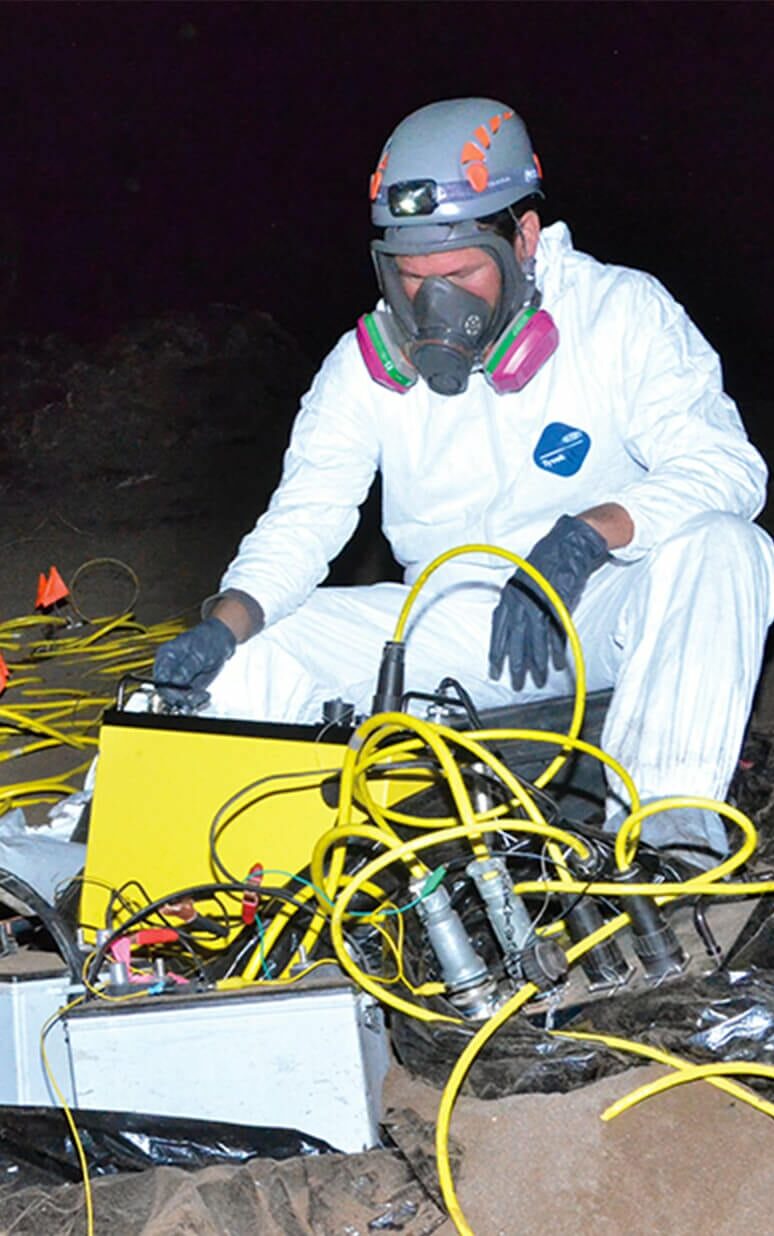
Air Quality
The quality of cave air is usually good. The air’s often cool temperature gives it a fresh feeling many people enjoy. Doctors in several countries recommend speleotherapy for several ailments, occasionally prescribing sitting in a cave to breathe the air.
Karst caves formed in carbonate rocks (limestone, dolomite, and marble) occasionally have slightly elevated levels of carbon dioxide in the air. As water and air move down through fractures in the rock into a cave, they carry carbon dioxide generated in the soil and released by plants through their roots. The typical levels of carbon dioxide are low and not noticed by visitors.
On occasion and usually in certain geologic areas, the levels of carbon dioxide are high enough to cause discomfort. In rare circumstances, carbon dioxide can reach dangerous concentrations. Because air with high concentrations of carbon dioxide is heavier than normal air, it concentrates in deeper sections of caves, and the presence of higher than normal carbon dioxide is usually noticed readily in shallower areas.
The significant presence of other gases in caves is uncommon to rare. Examples include methane from the decomposition of large volumes of organic material which washed into a cave, ammonia from large deposits of bat guano, and a variety of possible gases associated with geothermal areas.